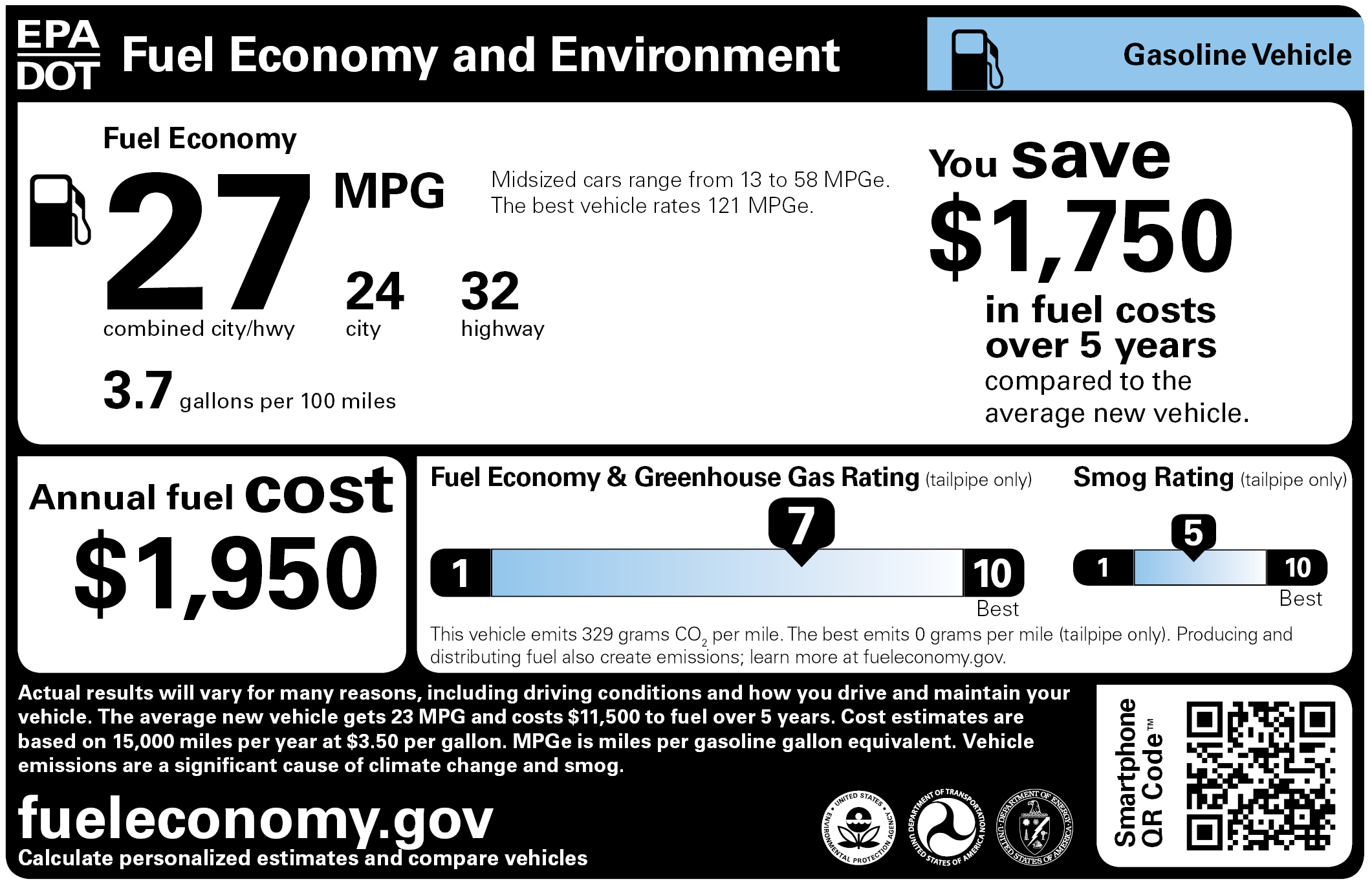EPA just announced that six of Ford’s 2013-2014 models will need new fuel economy labels. This represents the third adjustment in as many years to the best source of information for consumers on fuel economy and emissions from light-duty vehicles, so it seems like a great time to talk about just how important it is that manufacturers and the EPA get these labels right.
Fuel Economy and Environment labels are a critical piece of data
As I pointed out in the Automaker Rankings 2014 report, the latest EPA label now provides a more accurate picture of fuel economy based on new tests that better capture modern driving behavior, and it also includes information on fuel costs, global warming emissions, and smog-forming emissions. These standard labels allow for consumers to compare vehicles on as even a playing field as possible to ensure accurate and fair comparisons across all models, and fueleconomy.gov has been designed to provide even more of that information at your fingertips.

EPA’s Fuel Economy and Environment label allows for consumers to compare vehicles fairly on fuel usage and costs as well as global warming and smog-forming emissions.
Actual results will vary…and consumers notice!
However, while the EPA has done its best to create an accurate estimate for drivers, actual fuel usage for drivers will vary from that on the label due to everything from how hard you accelerate and how fast you drive to the weather and road conditions. Even having the windows open or closed can affect your mileage! (Tip: At highway speeds, roll them up and use A/C, but about town in stop-and-go, it’s better to have the A/C off and the breeze in your hair.)
On top of this, as consumers clamor for more and more efficient vehicles and manufacturers continue to comply with vehicles that have better and better fuel economy, these deviations become ever more important. If you’re an old school nerd like me or someone who just likes to make sure they’re getting the most out of their vehicle (also like me), you may keep a log book on mileage and fuel use, where you can see what type of fuel economy you typically get. Nowadays, with a preponderance of “trip computers” that allow users to monitor in real time their own fuel economy, anyone can monitor their fuel usage. And so, when a vehicle isn’t performing as it should, companies can (and do) get an earful. In fact, it was consumers themselves that helped identify the discrepancy with the Ford C-MAX.
But because of the “MPG Illusion”, consumers might not realize just how sensitive their vehicles are to small deviations in driving conditions/behavior, whether it’s a slightly heavier foot on the gas or underinflated tires. If a typical driver is expecting to see 40 mpg, on average, and he/she consistently only sees 36 mpg, that could seem like a large difference. However, for every 1000 miles traveled, that discrepancy only costs about $10 more in gas—that number is not zero, least of all in this economy, but it’s still less than three gallons of gas. If someone were instead driving a vehicle that should get just 24 mpg but only got 22.5 mpg, that is actually the same difference in fuel consumption as the 40-to-36 mpg shortfall. However, intuitively you might tend to think of 1-2 mpg different as being “within error” and therefore not notice the discrepancy. [Of course, the difference between driving a 24 mpg and a 40 mpg vehicle is something else entirely, which is why our Automaker Rankings analysis looks at the entire sales-weighted average of a manufacturer’s fleet when thinking about environmental impacts.]
But there’s no excuse for misleading your customers
All of this is not meant to excuse the industry’s recent label mishaps—on the contrary, it is meant to highlight just how sensitive consumers are to fuel economy today and why it is absolutely critical that manufacturers adhere to the rigorous standards set in place to enable consumers to make fair decisions. And it is up to EPA to continue to serve as watchdog for consumers moving forward.
Hyundai-Kia, our Greenest Automaker, is still under investigation for procedural errors made in testing of its 2011-2013 vehicles, and it settled with its customers to reimburse them for the shortfall. Ford, while complying with the letter of the law, found out last year just how sensitive its hybrids are to differences in weight and aerodynamics and adjusted its C-MAX hybrid fuel economy downward, leading to adjustments to the vehicle’s controls and money back for its customers. And now, more of their vehicles were found to fall short during an audit, including further adjustment to the C-MAX as well as a number of their highest fuel economy models.
In Automaker Rankings 2014, we highlighted Ford as a company that had made a concerted effort to improve the efficiency of its vehicles, and analysis of these revisions does not change their standing as the greenest domestic automaker because of the progress made across their entire fleet. However, sales of the C-MAX have fallen since the adjustment last year, and it seems likely that consumers will take notice again.
With regulations on the books slated to nearly double the fuel economy of the average vehicle, and fuel economy playing a bigger role in the vehicles purchased, it is paramount that consumers have the best and most accurate information available on the performance of these vehicles. Hopefully, these incidents will continue to make both the EPA and the automotive industry ever more vigilant about their fuel economy claims—or consumers could help put yet another automaker in the headlines for not delivering on performance.
